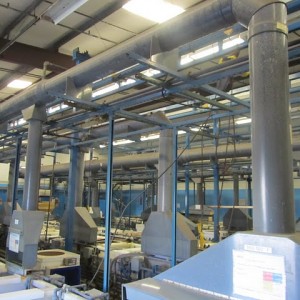 Jim Rogers from Duke Energy famously promotes efficiency as the “5th Fuel” in the world-wide portfolio of energy production. He echoes the consensus that renewable energy requires massive incentives to make it financially viable, while energy efficiency does not, and hence these opportunities should be more actively addressed.
Jim Rogers from Duke Energy famously promotes efficiency as the “5th Fuel” in the world-wide portfolio of energy production. He echoes the consensus that renewable energy requires massive incentives to make it financially viable, while energy efficiency does not, and hence these opportunities should be more actively addressed.
The dirty little secret is that energy efficiency regularly requires incentives as well.
Though it may seem counterintuitive, many companies look for a five to ten year payback on their renewable energy investments, while they continue to apply “it better be under a three year payback or it won’t get done” for more traditional energy efficiency projects. Consequently, while EE projects have better returns, incentives are often still critical to getting these projects inside this payback hurdle.
Over the last twelve months, 70% of the EE projects Groom Energy implemented have been supported by some kind of financial incentive. Whether it’s a traditional motor or lighting upgrade with a utility rebate or a CHP system gaining Massachusetts’ Alternative Energy Credits, our engineers spend a lot of time trying to identify and secure the best incentives available for each customer project.
Each utility, state, city, county or municipality may have it’s own specific program. In California alone there are over 200 different efficiency incentives. Providing a bit of help on the identification front, the folks at DSIRE are doing their best to keep up, with an on-line database tracking thousands of renewable and energy efficiency incentive programs across the entire US.
Determining how to sure our customers will get the incentives can be just as painful. Some authorities take a prescriptive approach, allocating a specific $ incentive figure for each measure deployed. Others take a custom approach, applying a $ figure for the total energy saved or produced. Some burden projects with small $ incentives with detailed energy modeling and pre and post project measurement and verification.
While the complexity provides a distinct competitive advantage for those who have the IQ and fortitude to understand and maximize the incentive benefits, customers perceive much of this as additional risk. And with risk comes hesitation.
Because of this, some groups are pushing for a national approach to energy efficiency and renewables, a National Efficiency Standard. The Energy Future Coalition, in partnership with American Council for an Energy Efficient Economy (ACEEE), Natural Resources Defense Council, the Environmental Law and Policy Center, Environment Northeast, and the Sierra Club, have proposed an EERS that sets a 15% electricity and 10% natural gas savings target by 2020. Other approaches would equally value the benefit of a megawatt saved or produced. This would be similar to a REC which establishes value based on the projected performance of a renewable asset, but on a national scope. Others, differentiate between production and efficiency, rewarding each with it’s own specific incentive.
What most of these folks do agree on is that reducing the complexity and risk of the puzzle of incentives would deliver more impact than most other energy or carbon reduction initiative in the que. The question remains, who will lead the effort to drive it? The Department of Energy? The White House?

